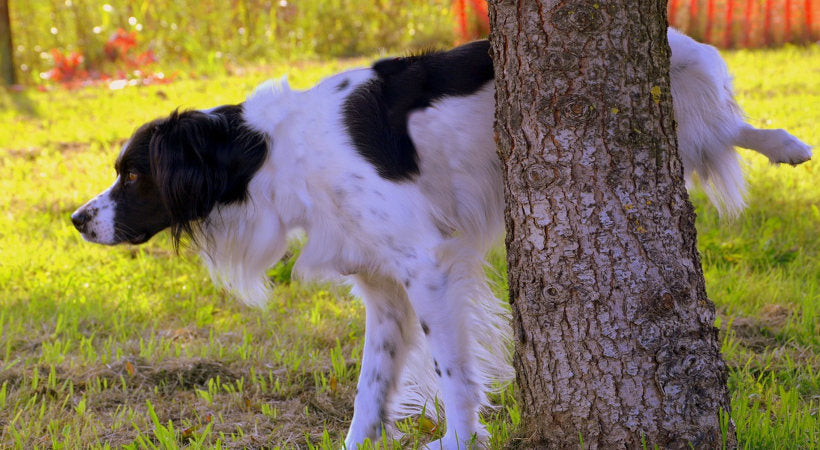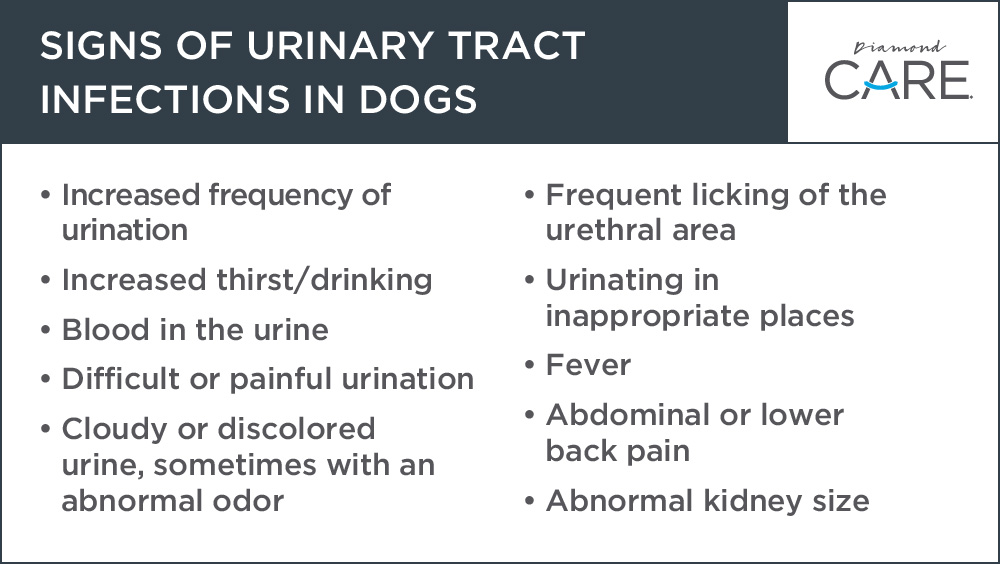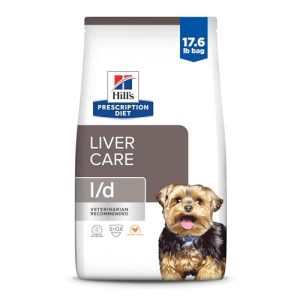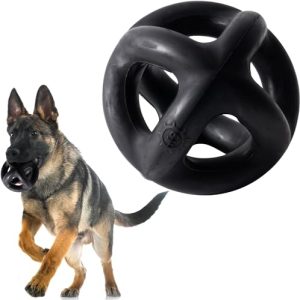Is your dog suddenly going to the bathroom more often or having accidents inside the house? These could be signs of a bladder infection, a common but uncomfortable problem for many dogs.
You want to keep your furry friend happy and healthy, but how can you be sure if your dog has a bladder infection? You’ll discover the key signs to watch for and what steps you can take to help your pet feel better fast.
Don’t wait—understanding these symptoms early can make all the difference for your dog’s health. Keep reading to learn exactly what to look for and how to act.

Credit: walkinpets.com
Common Symptoms
Recognizing the common symptoms of a bladder infection in your dog is crucial for early treatment. These signs often show up in everyday behaviors, so paying close attention can make a big difference. Let’s look at the key symptoms that you should watch for.
Frequent Urination
If your dog suddenly needs to go out more often, it could be a sign of a bladder infection. You might notice they are restless or sniffing around as if searching for a spot to relieve themselves more frequently than usual.
This change in bathroom habits is often one of the first indicators. Have you noticed your dog asking to go outside more than normal lately?
Straining To Urinate
When a dog has a bladder infection, urination may become difficult or painful. Your dog might squat for a long time or seem to push without much success.
It’s important to observe if your dog appears uncomfortable or shows signs of distress during bathroom breaks. This discomfort is a clear signal that something isn’t right.
Blood In Urine
Seeing blood in your dog’s urine can be alarming but is a common symptom of bladder infections. The urine might look pink, red, or even brownish.
Don’t ignore this sign, even if it happens just once. Have you checked the color of your dog’s urine recently?
Accidents In The House
Even well-trained dogs might start having accidents indoors if they have a bladder infection. This is often because they can’t hold their urine or feel the urgent need to go suddenly.
If your dog is having more accidents than usual, it’s a signal to investigate further. Could this change in behavior be linked to discomfort during urination?

Credit: pupford.com
Behavioral Changes
Recognizing behavioral changes in dogs can be crucial in identifying health issues. One such concern is a bladder infection. Dogs often exhibit noticeable behavioral shifts when unwell. Understanding these changes can help in seeking timely medical care.
Increased Licking Of Genital Area
Dogs with bladder infections often lick their genital area more. This behavior is a sign of discomfort or irritation. Excessive licking can lead to further irritation, worsening the situation. Monitoring this behavior can help detect problems early.
Restlessness And Discomfort
Restlessness is another common sign. Your dog might pace more or seem unable to relax. The discomfort from a bladder infection can lead to frequent position changes. This constant movement is a dog’s way of seeking relief.
Decreased Appetite
A reduced appetite can signal a health issue. Dogs with bladder infections may eat less due to discomfort. This change in eating habits can affect their overall energy and mood. Observing your dog’s eating patterns is vital for their health.
Causes Of Bladder Infection
Bladder infections in dogs happen due to several reasons. Knowing these causes helps to spot the problem early. Understanding what triggers the infection can guide better care and treatment for your pet.
Bacterial Infections
Bacteria are the most common cause of bladder infections in dogs. They enter the urinary tract and multiply quickly. This leads to inflammation and discomfort. Bacteria from the skin or environment can easily invade the bladder.
Underlying Health Issues
Some health problems make dogs prone to bladder infections. Conditions like diabetes and bladder stones increase risk. These issues can weaken the immune system. A weak immune system cannot fight off infections well.
Poor Hygiene
Dirty living areas can cause bladder infections. Lack of regular cleaning allows bacteria to grow. Dogs with poor grooming are also at risk. Keeping your dog clean helps prevent infections.
When To Visit The Vet
Knowing when to visit the vet for a suspected bladder infection in your dog can save your pet from unnecessary suffering and prevent complications. Sometimes, symptoms may seem mild or go away for a while, but certain signs indicate that professional care is urgently needed. Recognizing these moments helps you act quickly and confidently.
Persistent Symptoms
If your dog continues to show signs like frequent urination, blood in the urine, or accidents in the house for more than a couple of days, it’s time to see the vet. These symptoms rarely improve on their own and can signal a worsening infection.
Ignoring persistent symptoms can lead to kidney infections or other serious issues. Have you noticed your dog’s behavior staying the same or getting worse despite home care? That’s a clear signal to get professional help.
Severe Pain Or Distress
Watch for signs of intense pain such as whining, licking the genital area excessively, or difficulty urinating. Your dog may also seem restless or unusually quiet, which can mean they’re in serious discomfort.
If you see your pet struggling this much, don’t wait—call your vet immediately. Severe pain is not normal and often requires prompt medical treatment to relieve your dog’s suffering.
Recurring Infections
Has your dog had bladder infections more than once in a short time? Recurring infections suggest an underlying issue that needs to be diagnosed and treated properly.
Repeated infections can damage your dog’s urinary tract and overall health. Discussing these patterns with your vet can lead to targeted tests and a long-term care plan to prevent future problems.
Home Care Tips
Taking care of your dog at home during a bladder infection can make a big difference in their recovery. Simple actions you take daily can ease discomfort and prevent the infection from worsening. Here are some easy-to-follow tips you can start right away.
Encouraging Water Intake
Water helps flush out bacteria from your dog’s bladder. Offer fresh water frequently throughout the day to keep your dog hydrated. You might try adding a little low-sodium broth to the water bowl to make it more appealing.
Have you noticed your dog prefers running water? A pet fountain can encourage more drinking. Keep an eye on how much they drink and make adjustments if needed.
Maintaining Cleanliness
Cleanliness is key to preventing further irritation. Wipe your dog’s genital area gently with a damp cloth after they urinate to remove any leftover bacteria. Make sure their bedding is washed regularly and stays dry.
If your dog has trouble with accidents, consider using waterproof mats or puppy pads to keep the area sanitary. This helps reduce the chance of the infection spreading or getting worse.
Monitoring Symptoms
Keep a close watch on your dog’s behavior and symptoms. Note if they are straining to urinate, licking their genital area more than usual, or showing signs of discomfort. These changes can help you decide when to seek veterinary care.
Have you tracked how often your dog urinates each day? Sudden increases or decreases can signal trouble. Keeping a simple diary can help you provide accurate information to your vet and catch problems early.
Prevention Strategies
Preventing bladder infections in dogs is easier than treating them. A few simple habits keep your dog healthy and comfortable. These prevention strategies reduce the risk of infection and promote overall well-being.
Regular Vet Checkups
Frequent visits to the vet help catch health issues early. The vet can spot signs of bladder problems before they worsen. Routine urine tests and physical exams keep your dog’s urinary system in good shape. Early detection means faster treatment and less discomfort for your dog.
Balanced Diet
A healthy diet supports your dog’s immune system. Feeding high-quality food with the right nutrients strengthens bladder health. Avoid foods that irritate the urinary tract. Plenty of water also helps flush out bacteria and toxins. Proper nutrition reduces the chance of infections forming.
Proper Exercise
Exercise promotes healthy bladder function by encouraging regular urination. Daily walks and playtime prevent urine from sitting too long in the bladder. Physical activity also improves overall health and immunity. A well-exercised dog has a lower risk of bladder infections.
Credit: maven.pet
Frequently Asked Questions
What Are Common Symptoms Of A Dog Bladder Infection?
Common symptoms include frequent urination, straining, blood in urine, and accidents indoors. Dogs may also lick their genital area excessively or show signs of discomfort.
How Can I Tell If My Dog Is In Pain From Infection?
Look for signs like whining, restlessness, or reluctance to urinate. Pain may also cause your dog to avoid activities or become irritable.
Can A Dog Bladder Infection Cause Changes In Urine Smell?
Yes, bladder infections often cause strong, foul-smelling urine. This change is due to bacteria and inflammation in the urinary tract.
When Should I Take My Dog To The Vet For Bladder Issues?
If your dog shows frequent urination, blood in urine, or pain signs, visit a vet promptly. Early treatment prevents complications and promotes quick recovery.
Conclusion
A dog with a bladder infection shows clear signs you can watch for. Frequent urination and discomfort are common symptoms. Early detection helps avoid serious health problems. Always take your dog to the vet for a proper check-up. Proper care and treatment will help your dog feel better fast.
Paying attention to your pet’s health keeps them happy and active. Don’t ignore small changes in behavior or bathroom habits. Catching infections early makes all the difference in recovery. Your dog depends on you to notice these important signs.

Emily Barker is the founder of ChillDogLife.com, a space dedicated to helping pup parents discover the best dog products, lifestyle tips, and cozy ideas for happier homes.
A lifelong dog lover, Emily combines her passion for pets with a knack for research to share trusted recommendations on everything from toys and furniture to health and everyday care.
Her goal is simple: to make life easier, stylish, and more joyful for dogs and the people who love them.







